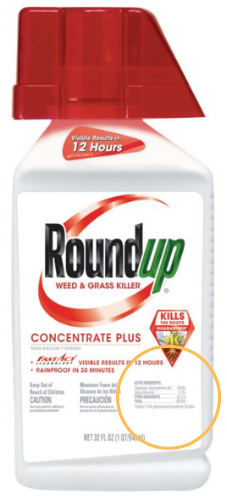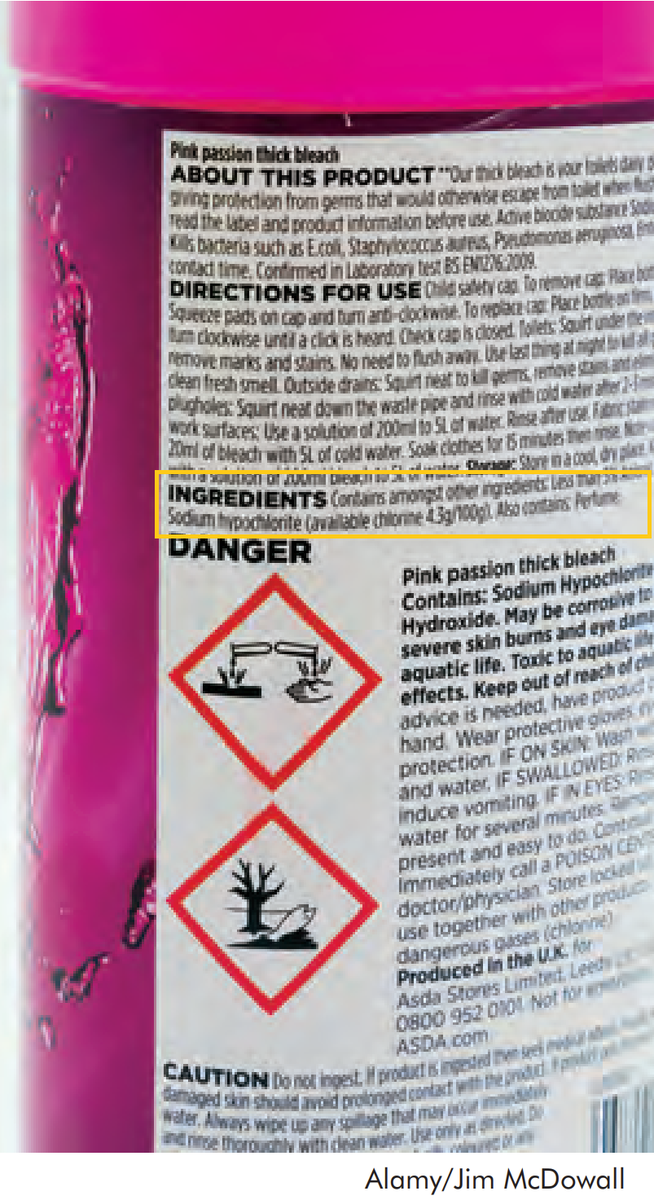Gateway on Pesticide Hazards and Safe Pest Management
How To Find Ingredients in Pesticide Products
Beyond Pesticides offers resources below to evaluate the health and ecological effects of specific chemical exposure from ACTIVE INGREDIENTS in pesticide products, as well as regulatory information and supporting scientific documents. Because various pesticide products can contain more than one active ingredient, it is important to READ the LABEL to determine chemical components.
With 192 different active ingredients and counting, it is essential to establish the connection between the use of these chemicals and their respective hazards.
View the step-by-step guide on how to search for the active ingredient(s) in pesticide products below:
- Go to U.S. EPA's Pesticide Product and Label System and enter the product name. The generic product name may vary.
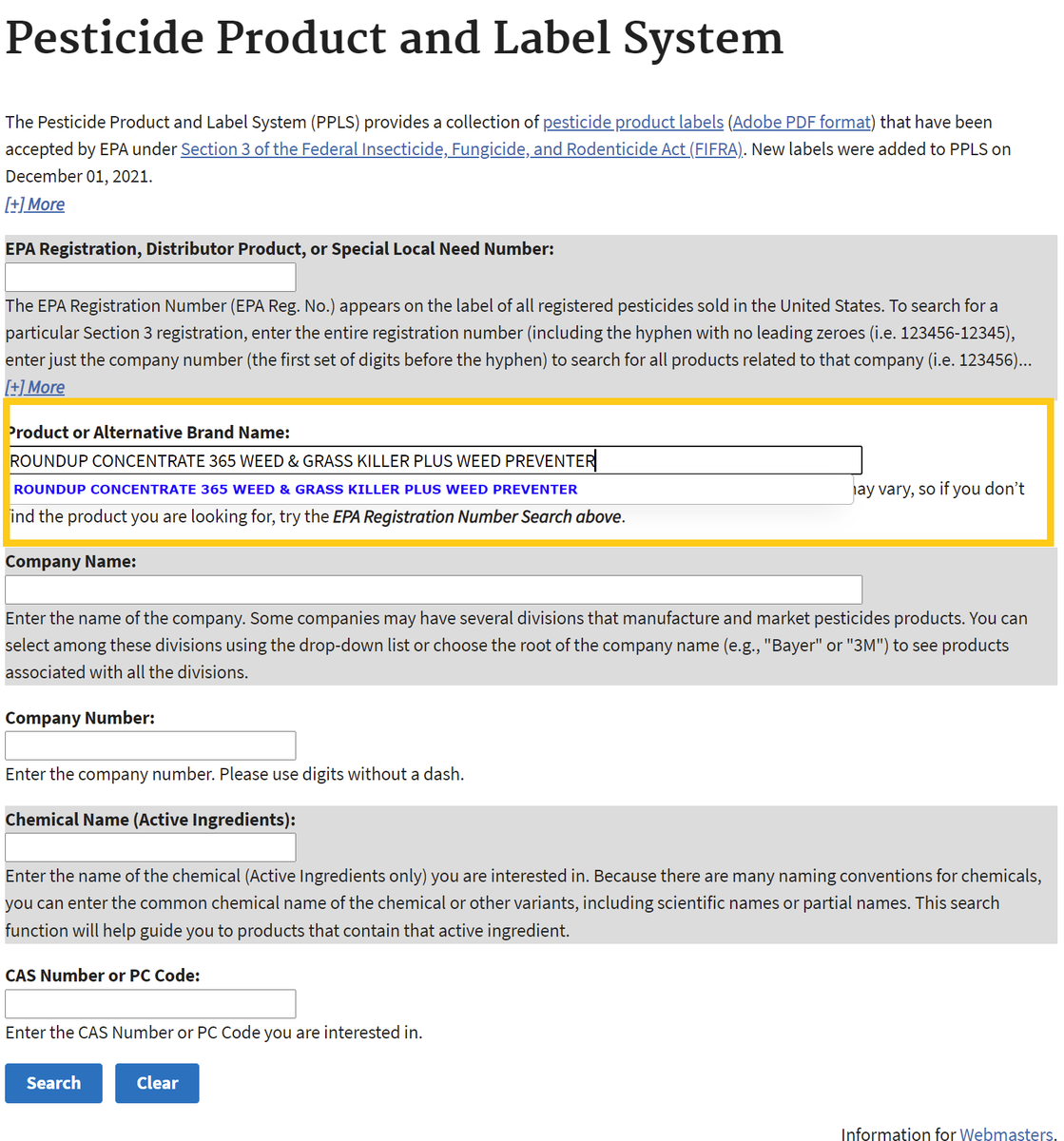
- After searching, click on the chemical ingredients tab or the link for the most recent label to find Active Ingredients.
Chemical List Label List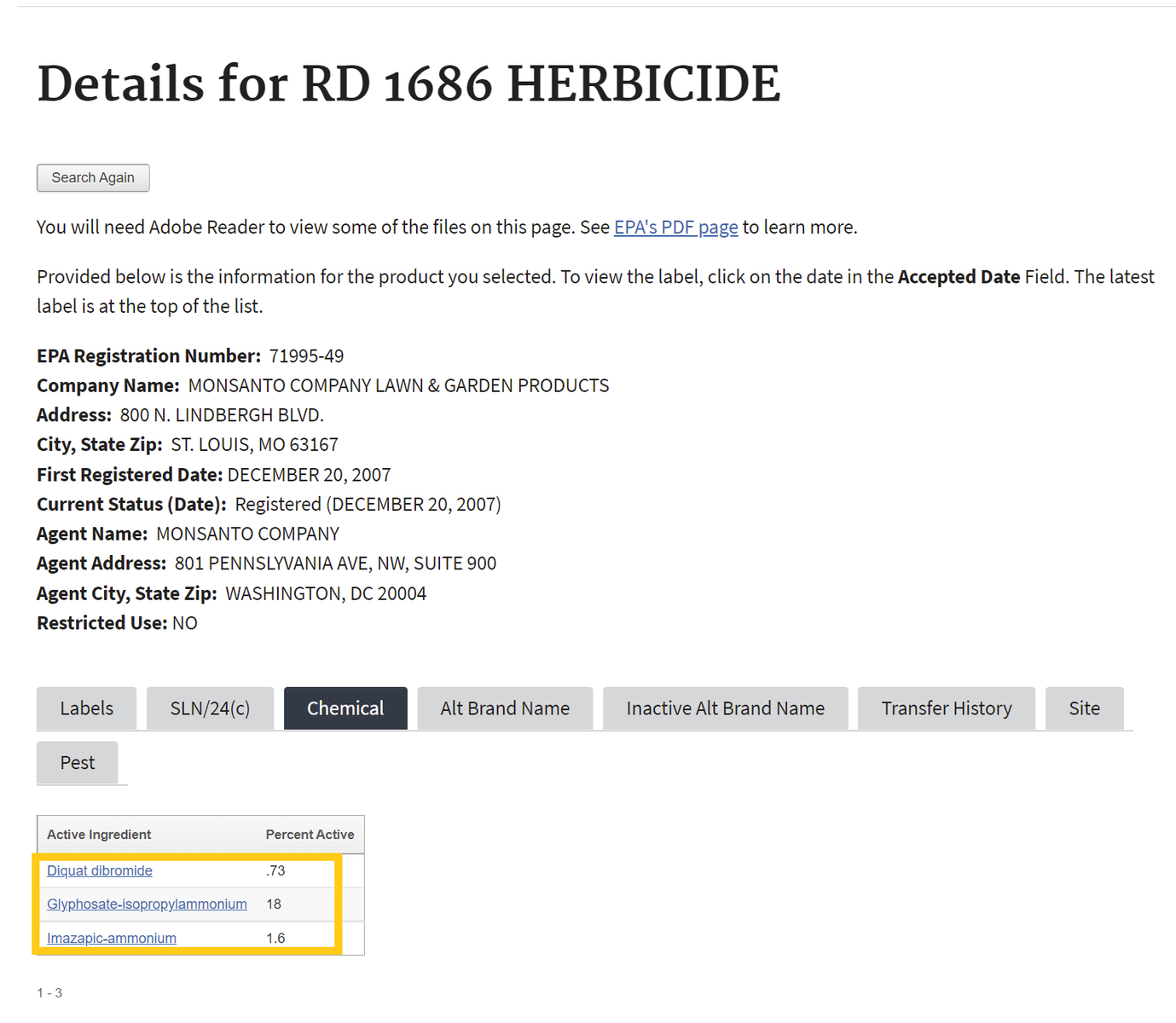
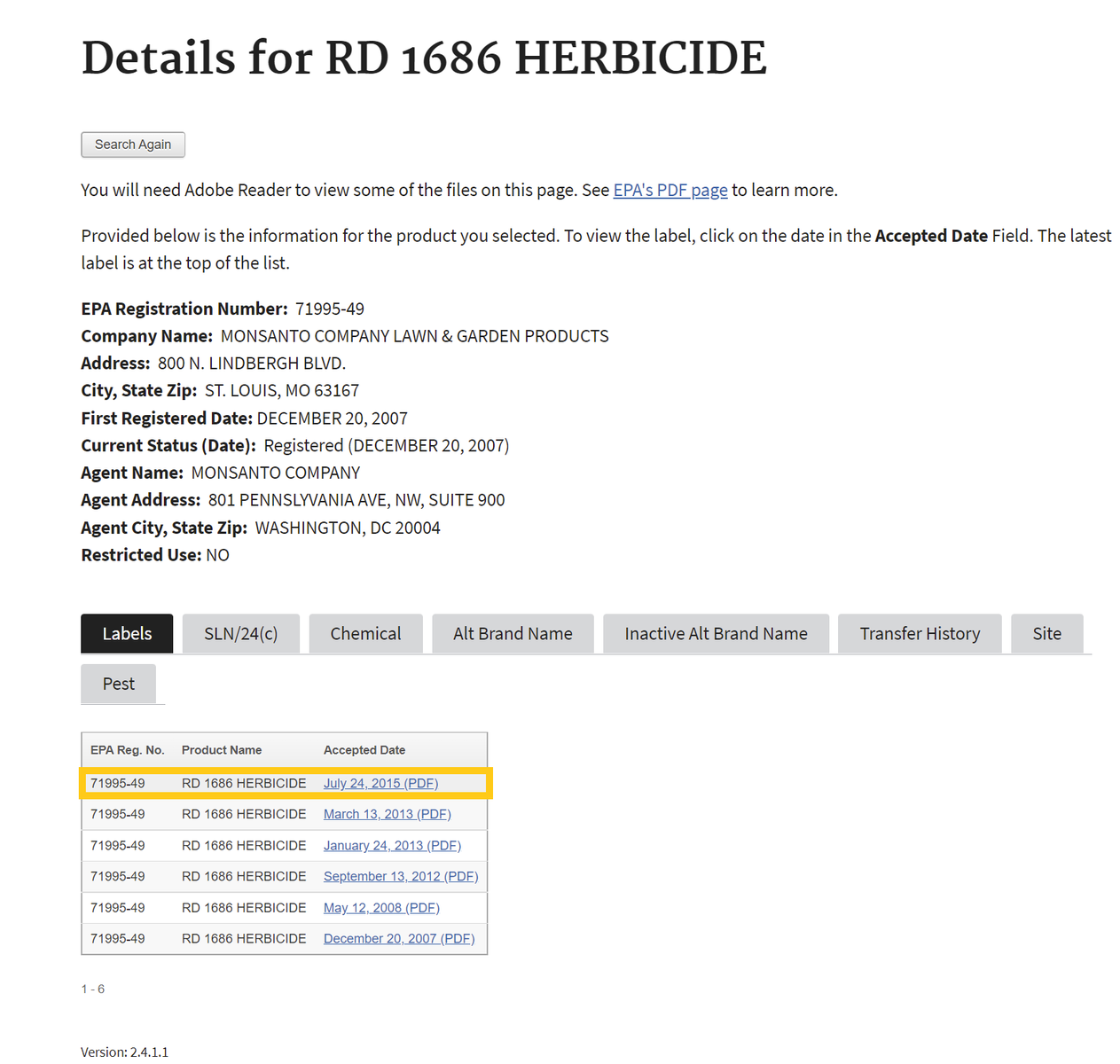
If one selects the chemical ingredients tab, skip to Step 4 . If not, proceed to step number 3 - To find the active ingredient(s) on the label, search for the page in the document containing the date of registration. Usually, the active ingredients section occurs within the first few pages of the label document.
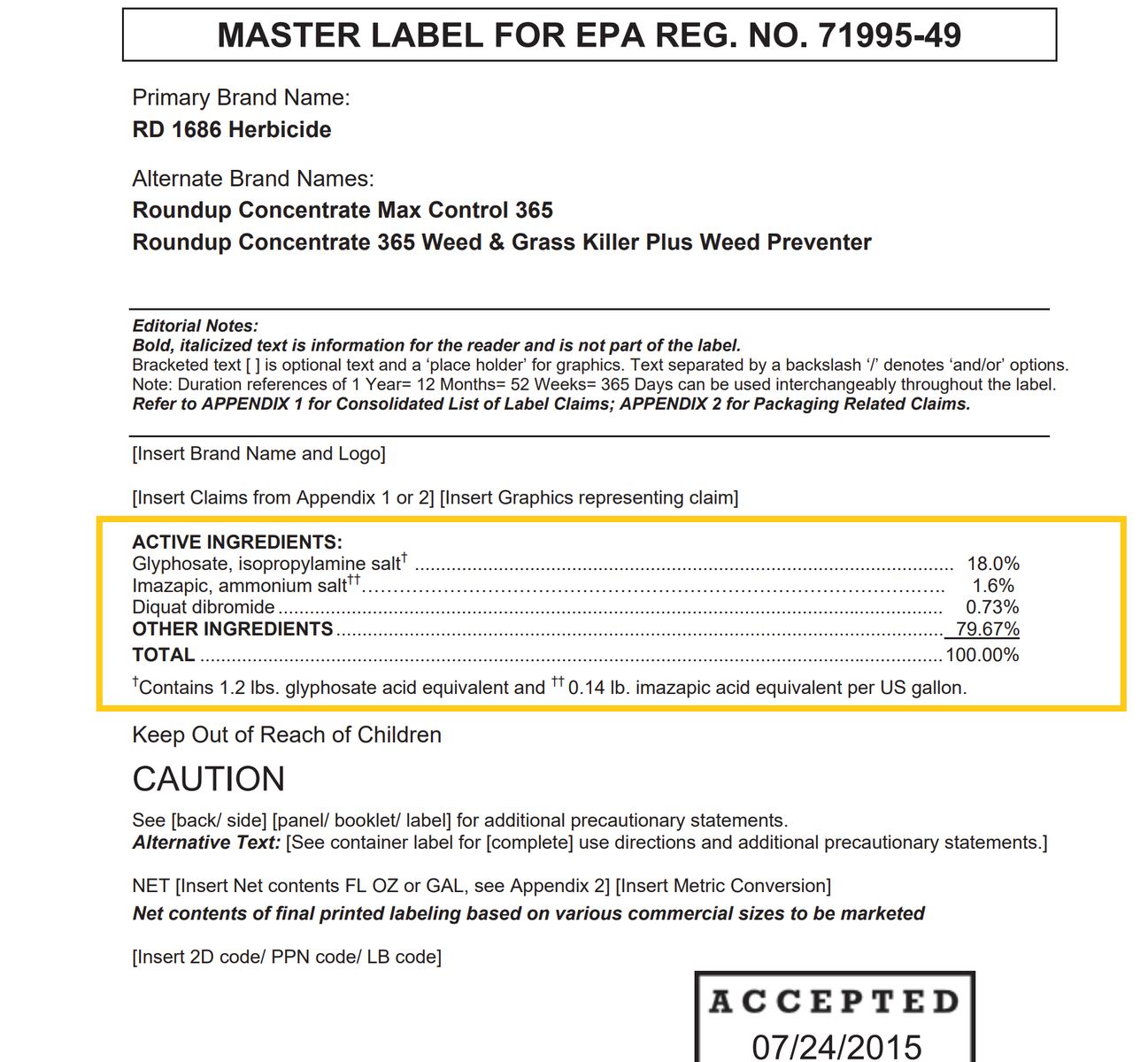
- Return to the Beyond Pesticides Gateway and search for the active ingredient name in the yellow box to the right or from the list below.
Difenoconazole
General Information
- Product Names:
- Uses: Agriculture
- Alternatives: Organic agriculture
- Beyond Pesticides rating: Toxic
Health and Environmental Effects
- Cancer: Possible (43)
- Endocrine Disruption: Suspected (43)
- Reproductive Effects: Not documented
- Neurotoxicity: Not documented
- Kidney/Liver Damage: Not documented
- Sensitizer/ Irritant: Not documented
- Birth/Developmental: Not documented
- Detected in Groundwater: Not documented
- Potential Leacher: Not documented
- Toxic to Birds: Not documented
- Toxic to Fish/Aquatic Organisms: Yes (43)
- Toxic to Bees: Not documented
Residential Uses as Found in the ManageSafe™ Database
Additional Information
- Supporting information:
- PAN Pesticides Database (Pesticide Action Network North America)
- Studies:
- Organic farming reduces pesticide load in a bird of prey. Fuentes, E. et al. (2024) Organic farming reduces pesticide load in a bird of prey, Science of The Total Environment. Available at: https://www.sciencedirect.com/science/article/pii/S0048969724029255.
- Single and combined exposure to ‘bee safe’ pesticides alter behaviour and offspring production in a ground-nesting solitary bee (Xenoglossa pruinosa). Rondeau, S. and Raine, N. (2024) Single and combined exposure to ‘bee safe’ pesticides alter behaviour and offspring production in a ground-nesting solitary bee (Xenoglossa pruinosa), Proceedings of the Royal Society Biological Sciences. Available at: https://royalsocietypublishing.org/doi/10.1098/rspb.2023.2939.
- Immune response of Brazilian farmers exposed to multiple pesticides . Jacobsen-Pereira, C.H. et al. (2020) ‘Immune response of Brazilian farmers exposed to multiple pesticides’, Ecotoxicology and Environmental Safety, 202, p. 110912. doi:10.1016/j.ecoenv.2020.110912.
- Pesticide bioaccumulation in radish produced from soil contaminated with microplastics. Ju, Hui & Yang, Xiaomei & Tang, Darrell & Osman, Rima & Geissen, Violette. (2023). Pesticide bioaccumulation in radish produced from soil contaminated with microplastics. Science of The Total Environment. 910. 168395. 10.1016/j.scitotenv.2023.168395.
- Sperm quality of rats exposed to difenoconazole using classical parameters and surface-enhanced Raman scattering: classification performance by machine learning methods. Pereira, V.R., Pereira, D.R., de Melo Tavares Vieira, K.C. et al. Sperm quality of rats exposed to difenoconazole using classical parameters and surface-enhanced Raman scattering: classification performance by machine learning methods. Environ Sci Pollut Res 26, 35253–35265 (2019). https://doi.org/10.1007/s11356-019-06407-0
- Triazole pesticides exposure impaired steroidogenesis associated to an increase in AHR and CAR expression in testis and altered sperm parameters in chicken. Serra, L., Bourdon, G., Estienne, A., Fréville, M., Ramé, C., Chevaleyre, C., Didier, P., Chahnamian, M., Ganier, P., Pinault, F., Froment, P., & Dupont, J. (2023). Triazole pesticides exposure impaired steroidogenesis associated to an increase in AHR and CAR expression in testis and altered sperm parameters in chicken. Toxicology reports, 10, 409–427. https://doi.org/10.1016/j.toxrep.2023.03.005
- Cardiotoxicity and triazole pesticides: therapeutic options for a neglected heart disease. Souza, D. and Roman-Campos, D. (2025) Cardiotoxicity and triazole pesticides: therapeutic options for a neglected heart disease, Expert Review of Cardiovascular Therapy. Available at: https://www.tandfonline.com/doi/full/10.1080/14779072.2025.2476124.
- Difenoconazole induces cardiovascular toxicity through oxidative stress-mediated apoptosis in early life stages of zebrafish (Danio rerio). Zhu, J., Liu, C., Wang, J., Liang, Y., Gong, X., You, L., Ji, C., Wang, S. L., Wang, C., & Chi, X. (2021). Difenoconazole induces cardiovascular toxicity through oxidative stress-mediated apoptosis in early life stages of zebrafish (Danio rerio). Ecotoxicology and environmental safety, 216, 112227. Advance online publication. https://doi.org/10.1016/j.ecoenv.2021.112227
- Assessing pesticide residue occurrence and risks in the environment across Europe and Argentina. Alaoui, A., Christ, F., Abrantes, N., Silva, V., González, N., Gai, L., Harkes, P., Navarro, I., Torre, A., Martínez, M. Á., Norgaard, T., Vested, A., Schlünssen, V., Aparicio, V. C., Campos, I., Pasković, I., Pasković, M. P., Glavan, M., Ritsema, C., & Geissen, V. (2024). Assessing pesticide residue occurrence and risks in the environment across Europe and Argentina. Environmental pollution (Barking, Essex : 1987), 363(Pt 1), 125056. https://doi.org/10.1016/j.envpol.2024.125056
- Adsorption behavior and mechanism of five pesticides on microplastics from agricultural polyethylene films. Wang, Ting & Yu, Congcong & Chu, Qiao & Wang, Fenghe & Lan, Tao & Wang, Jingfeng. (2019). Adsorption behavior and mechanism of five pesticides on microplastics from agricultural polyethylene films. Chemosphere. 244. 125491. 10.1016/j.chemosphere.2019.125491.
- Metabolomics and transcriptomics reveal the toxicity of difenoconazole to the early life stages of zebrafish (Danio rerio). Teng, Miaomiao et al. “Metabolomics and transcriptomics reveal the toxicity of difenoconazole to the early life stages of zebrafish (Danio rerio).” Aquatic toxicology (Amsterdam, Netherlands) vol. 194 (2018): 112-120. doi:10.1016/j.aquatox.2017.11.009








.png)
